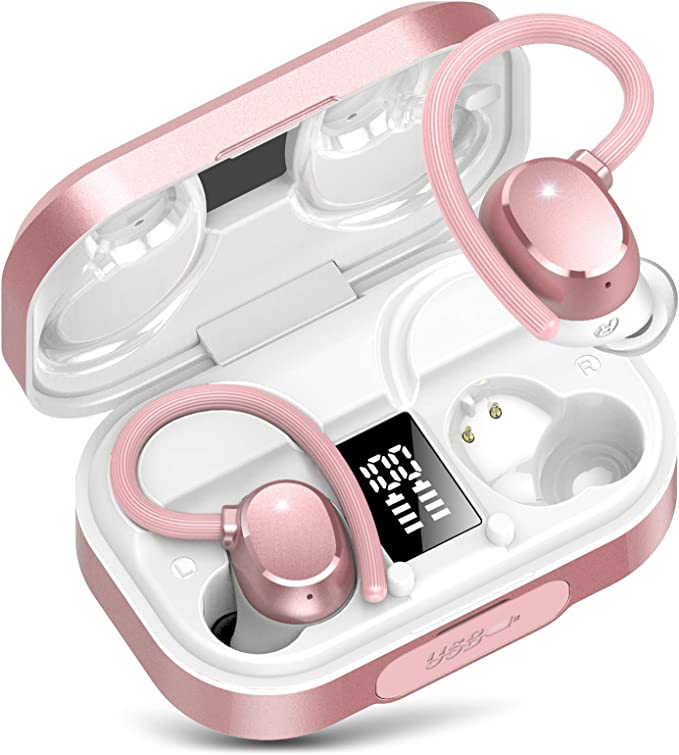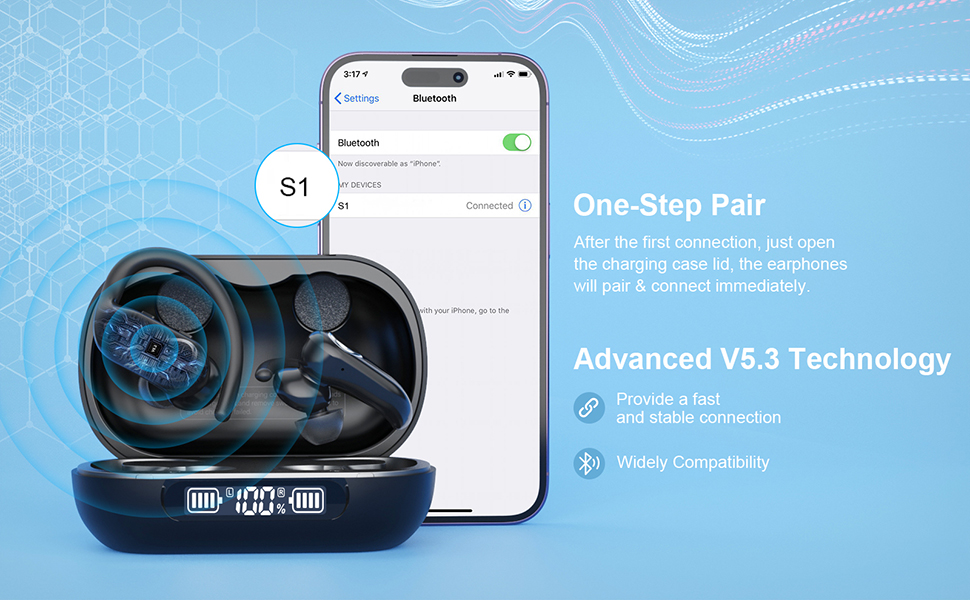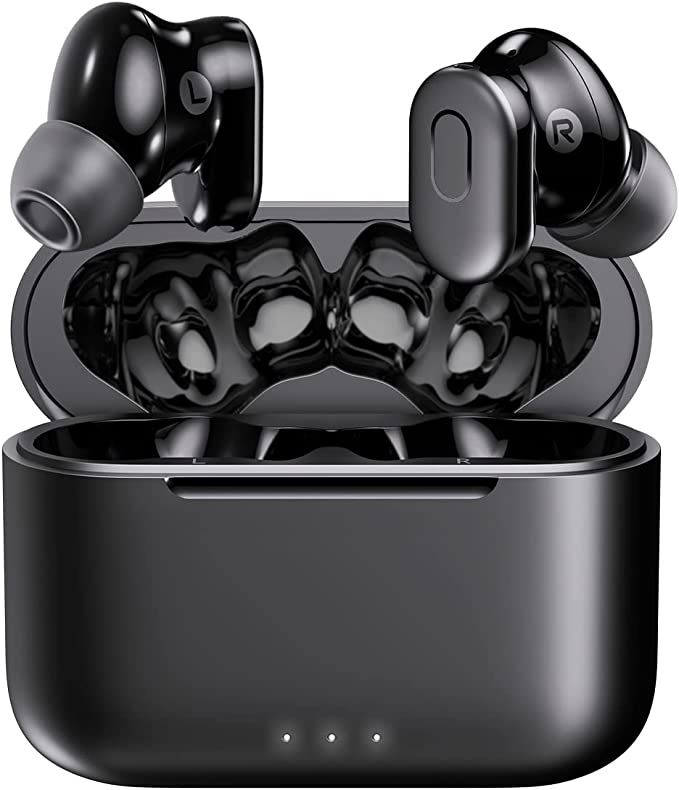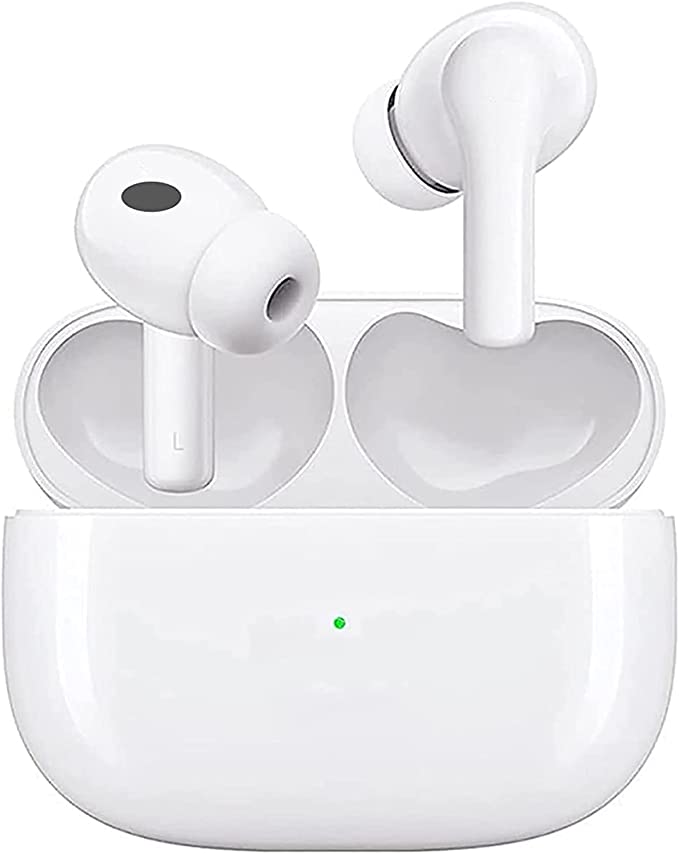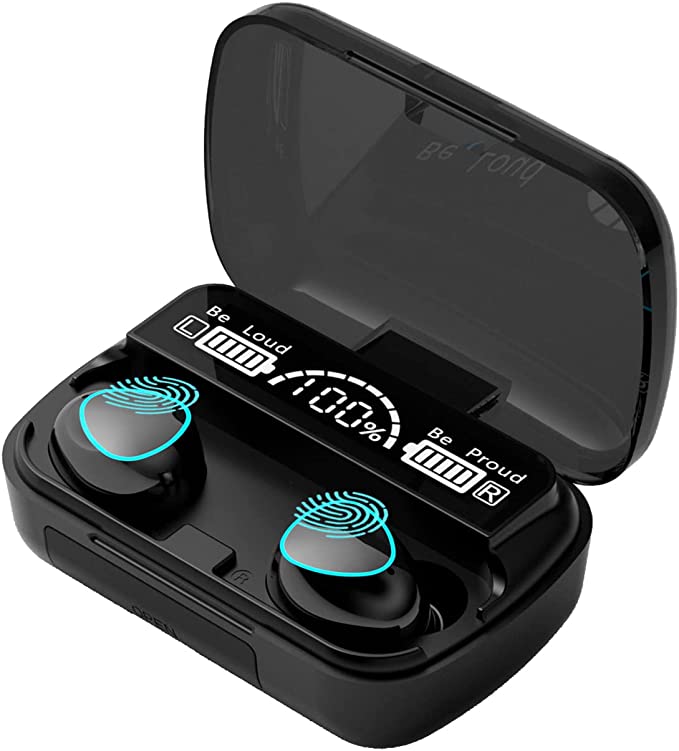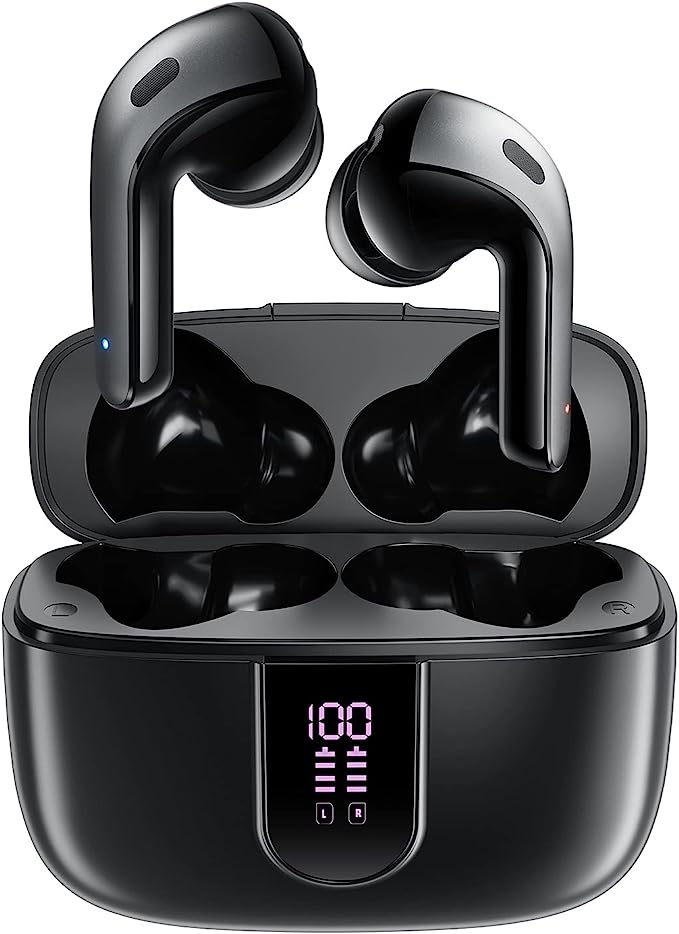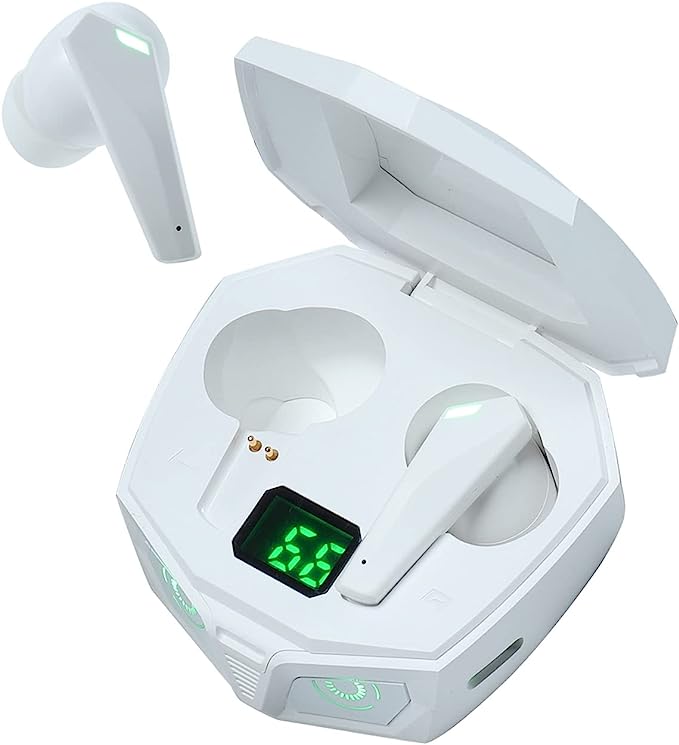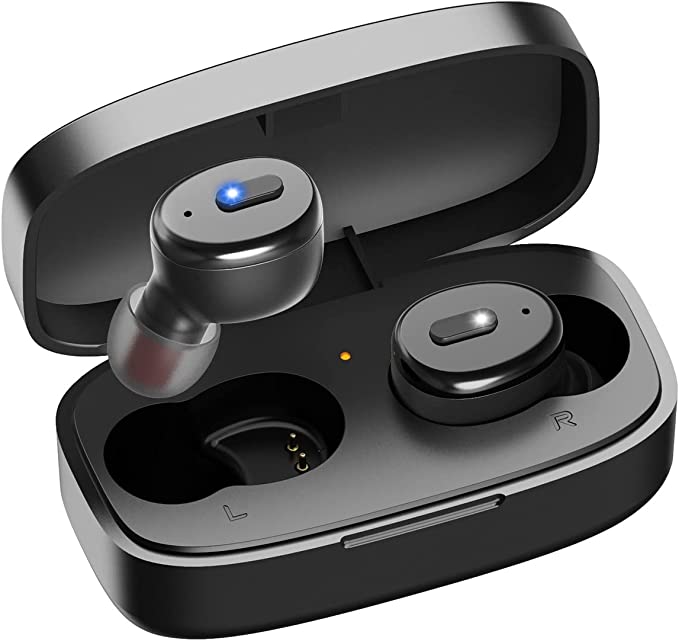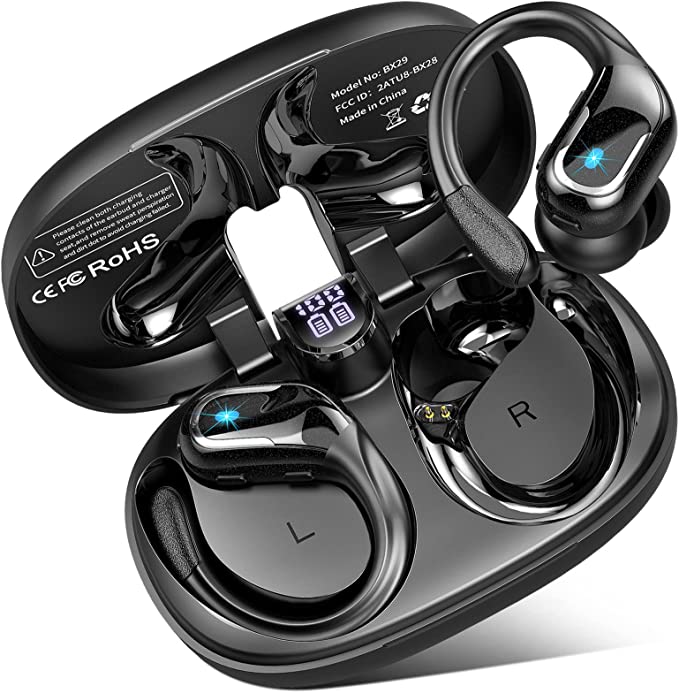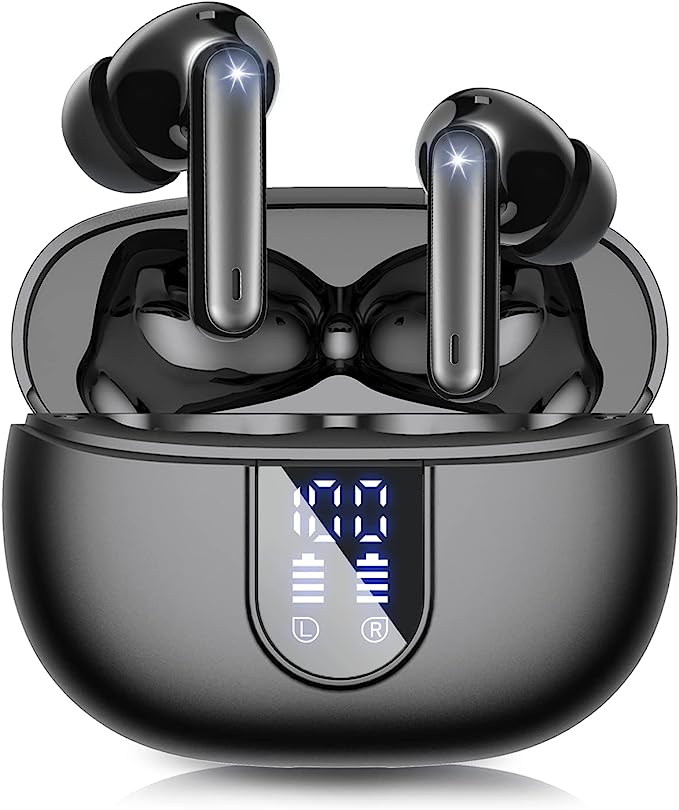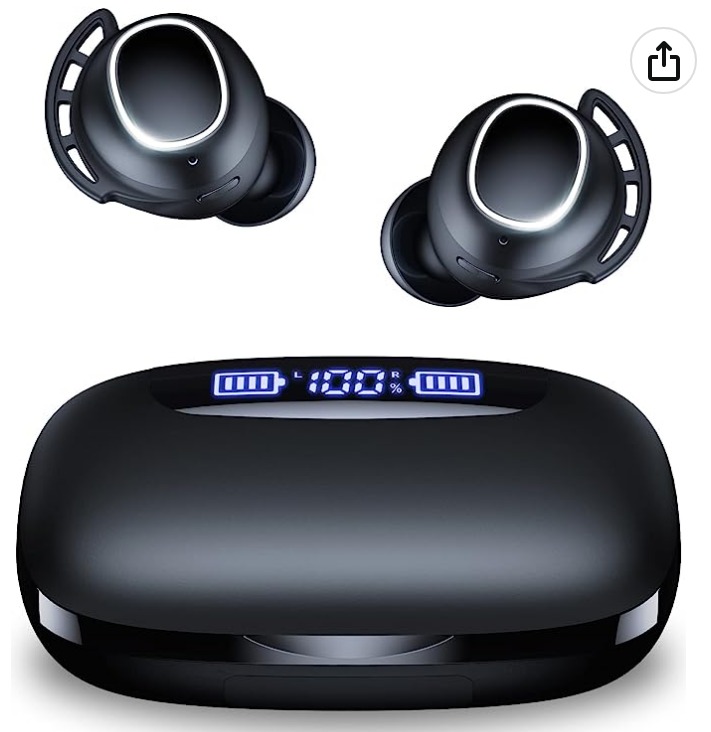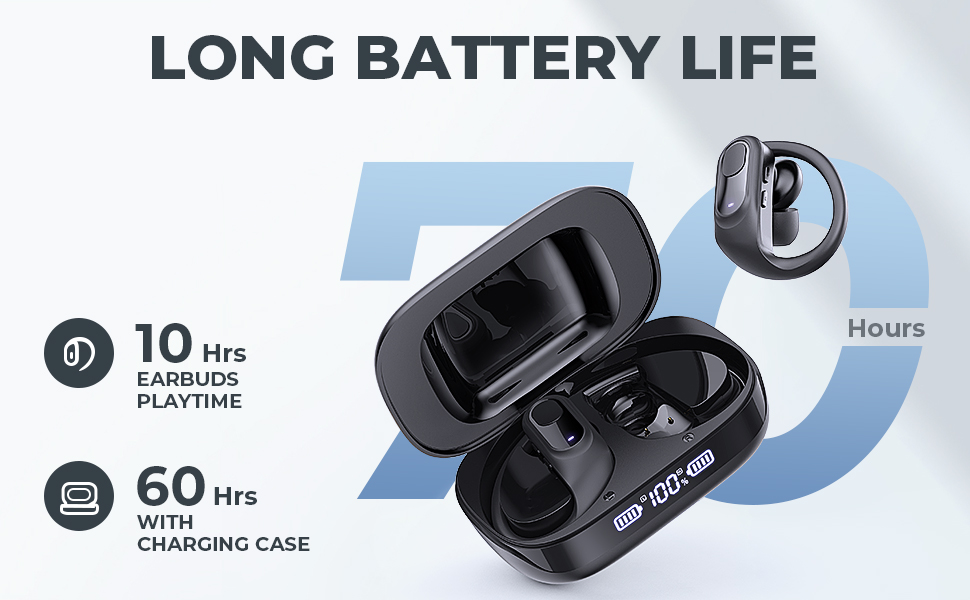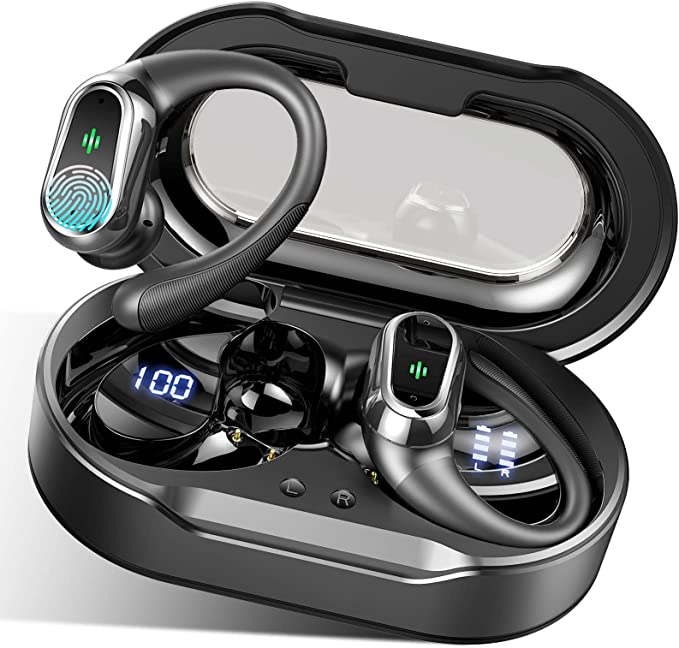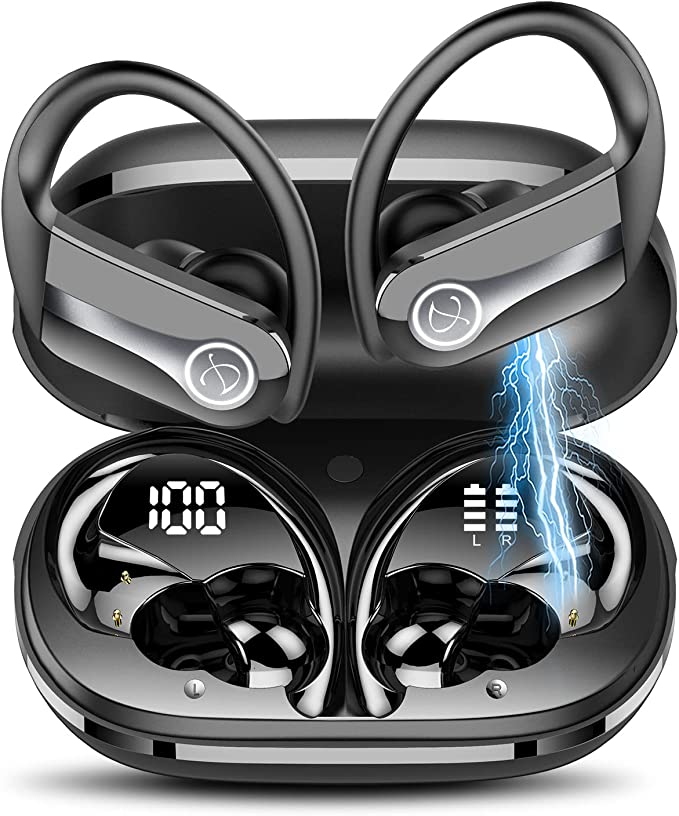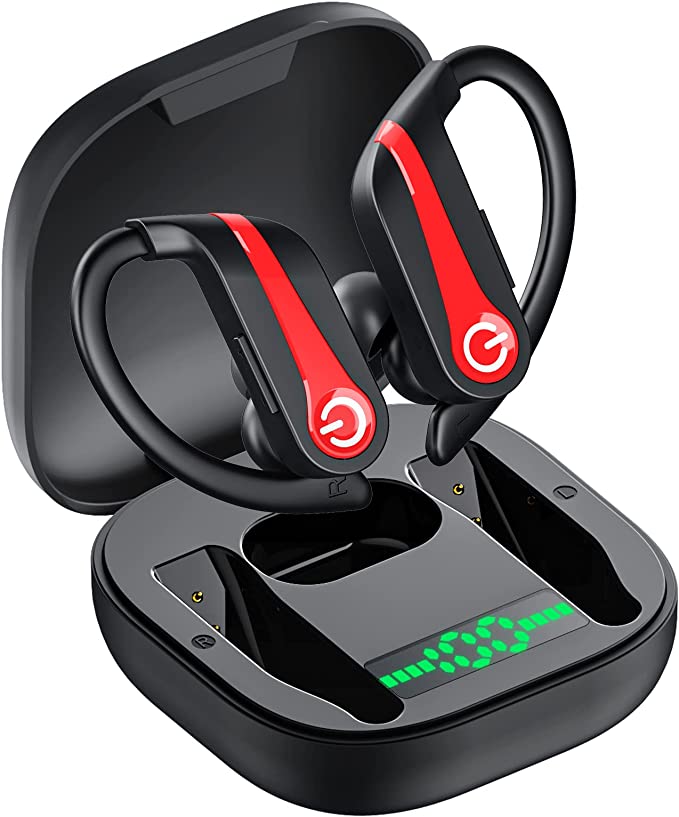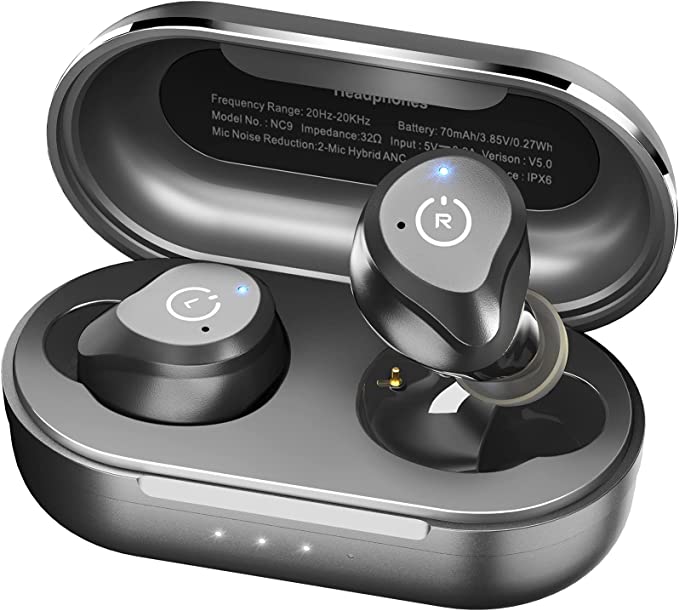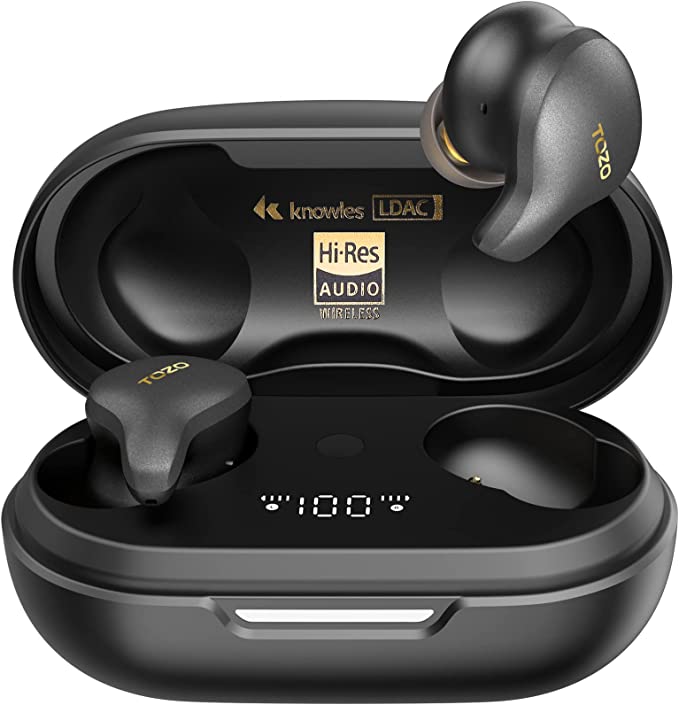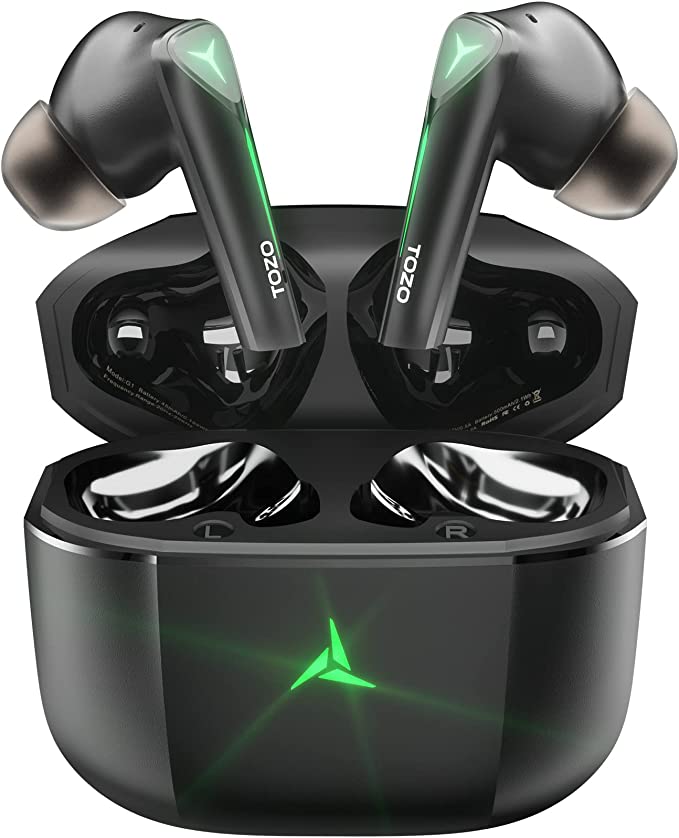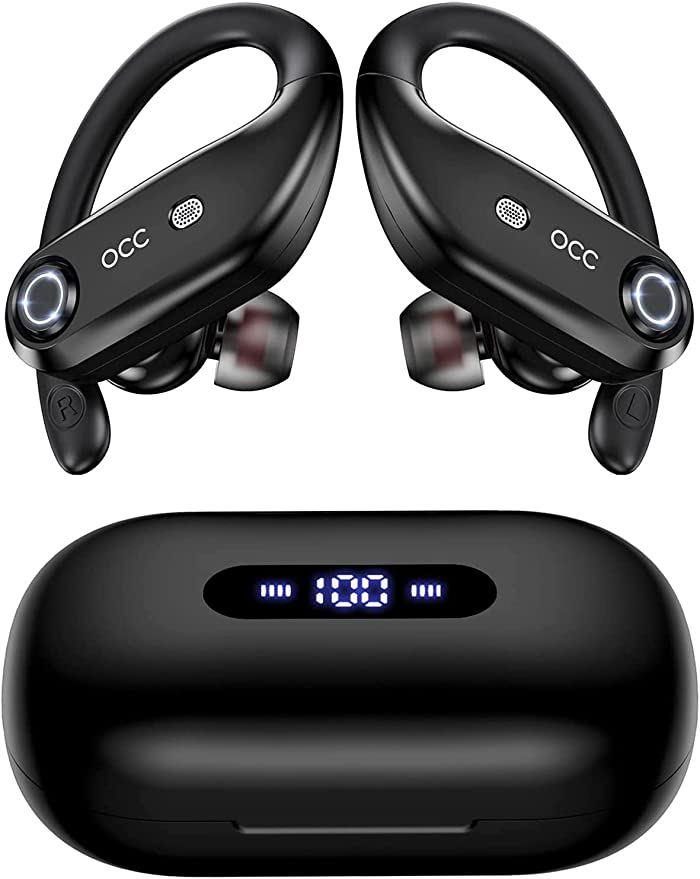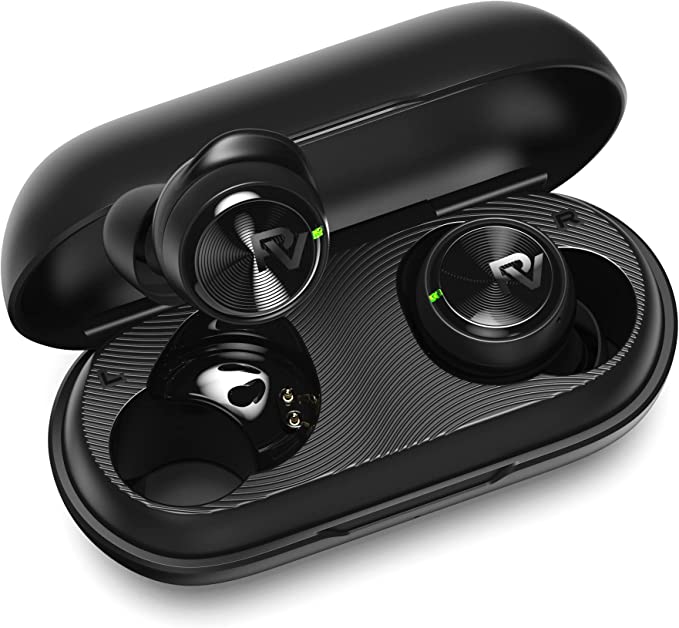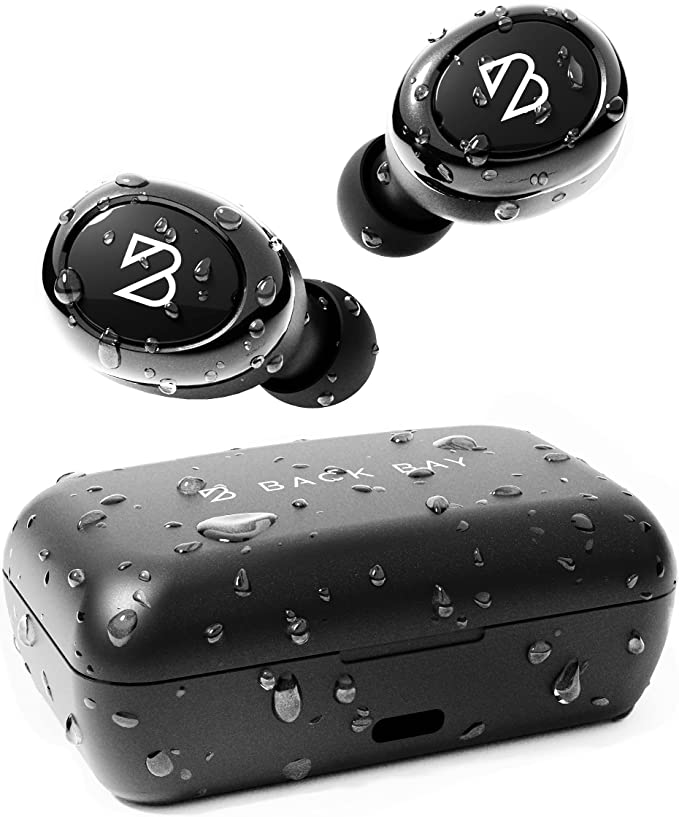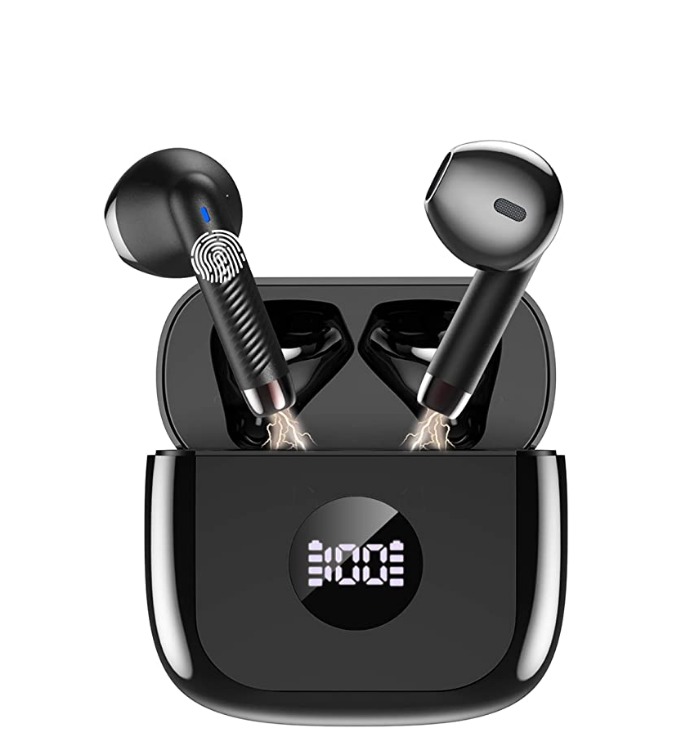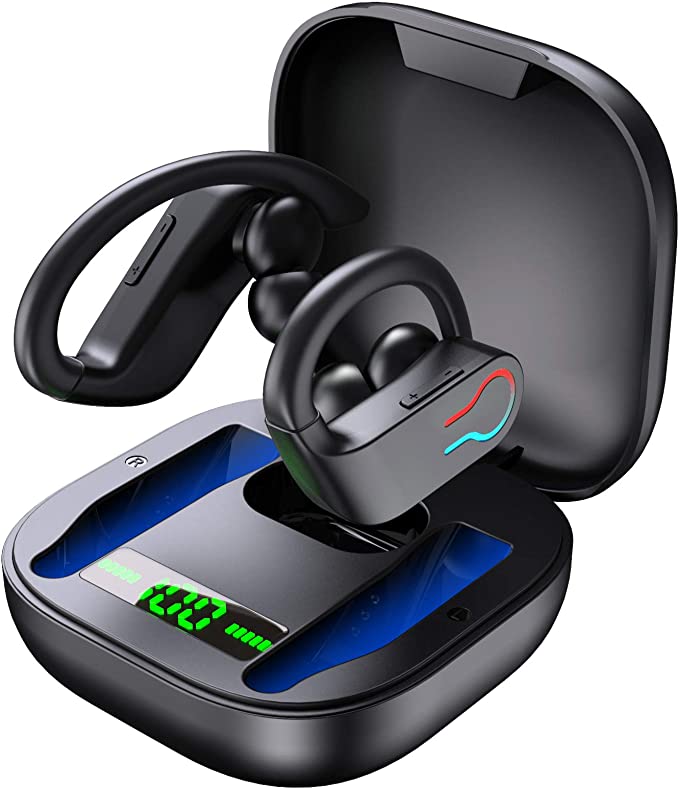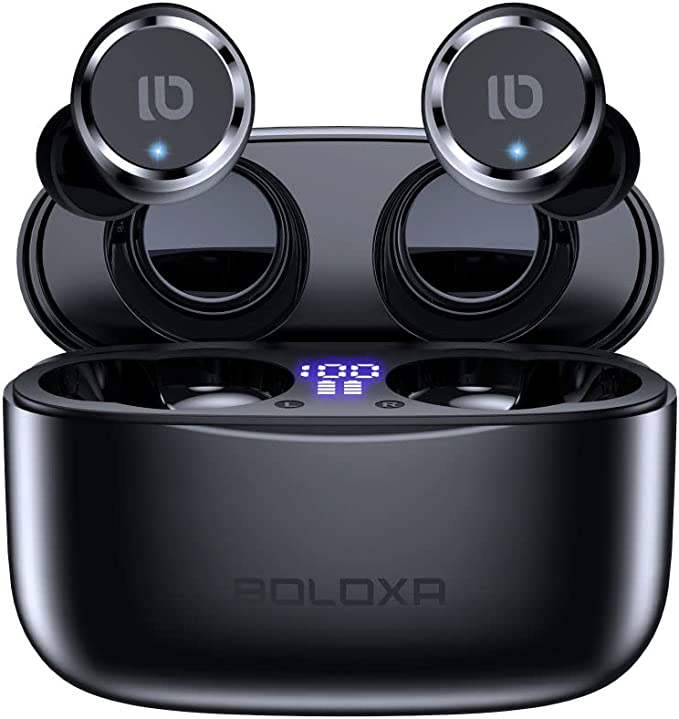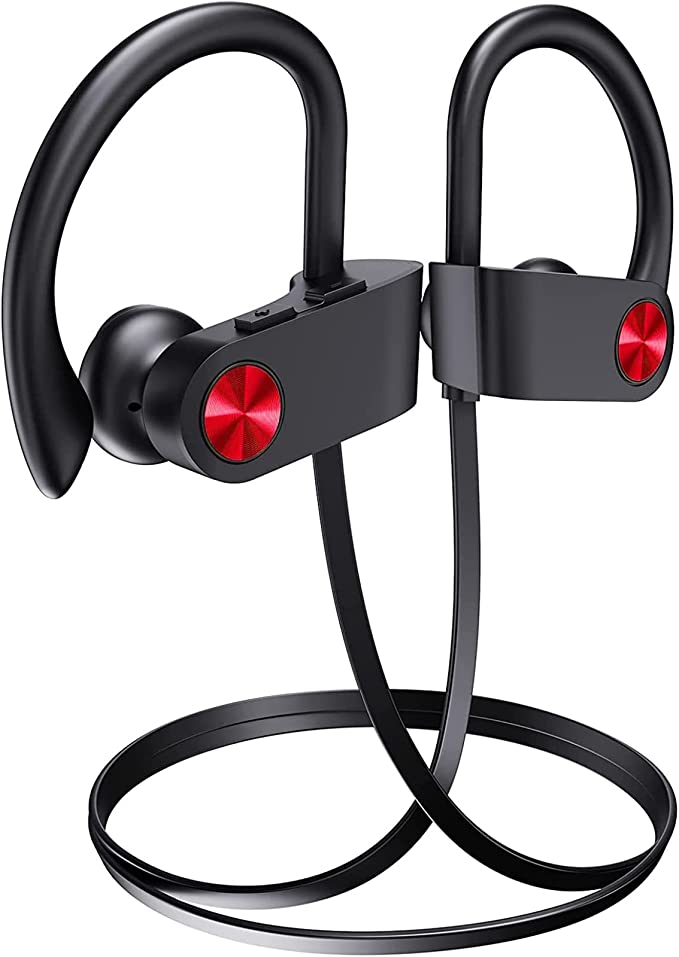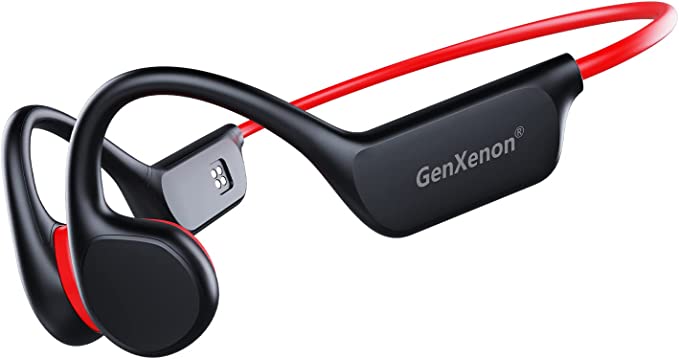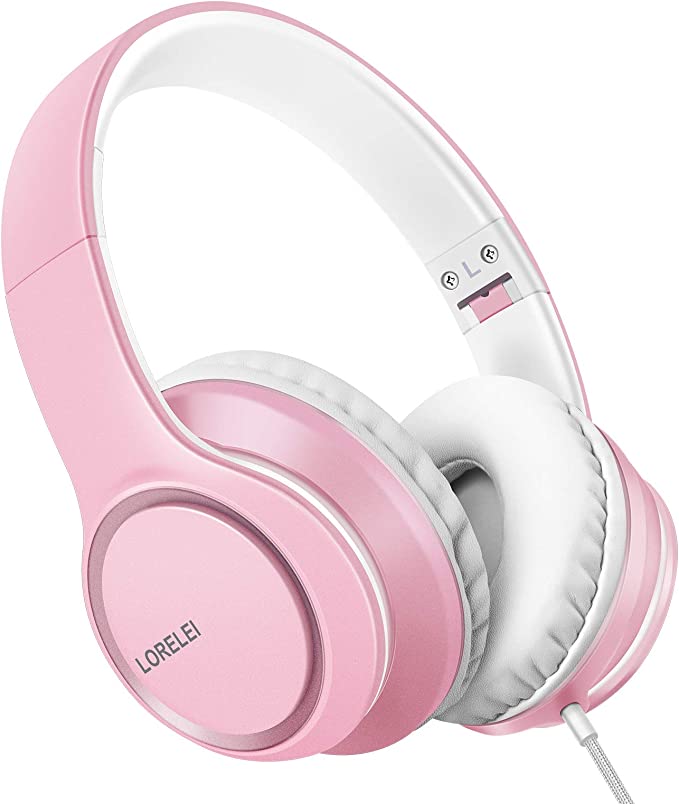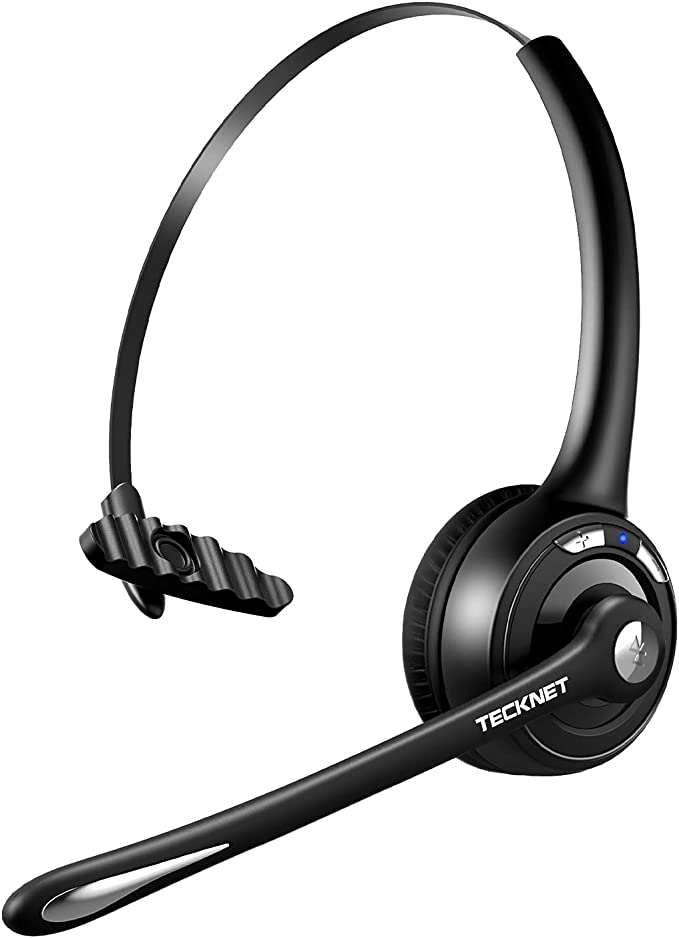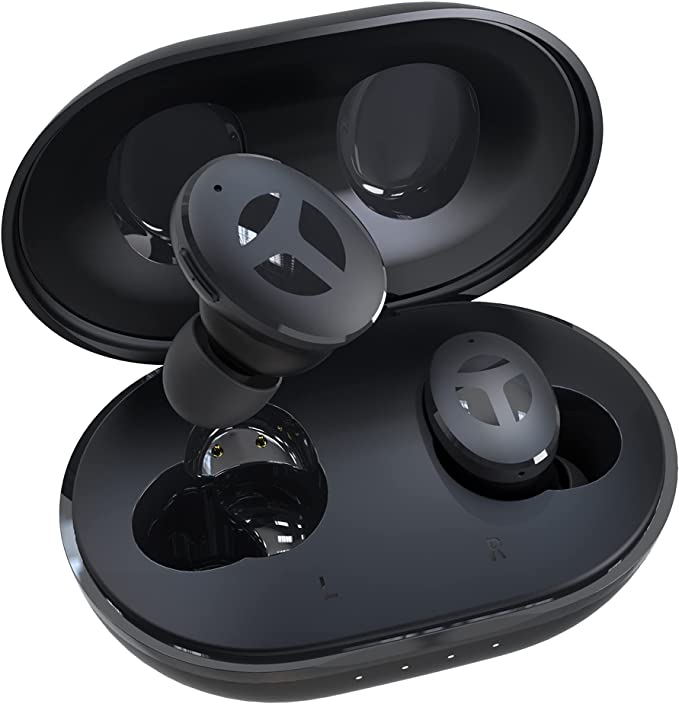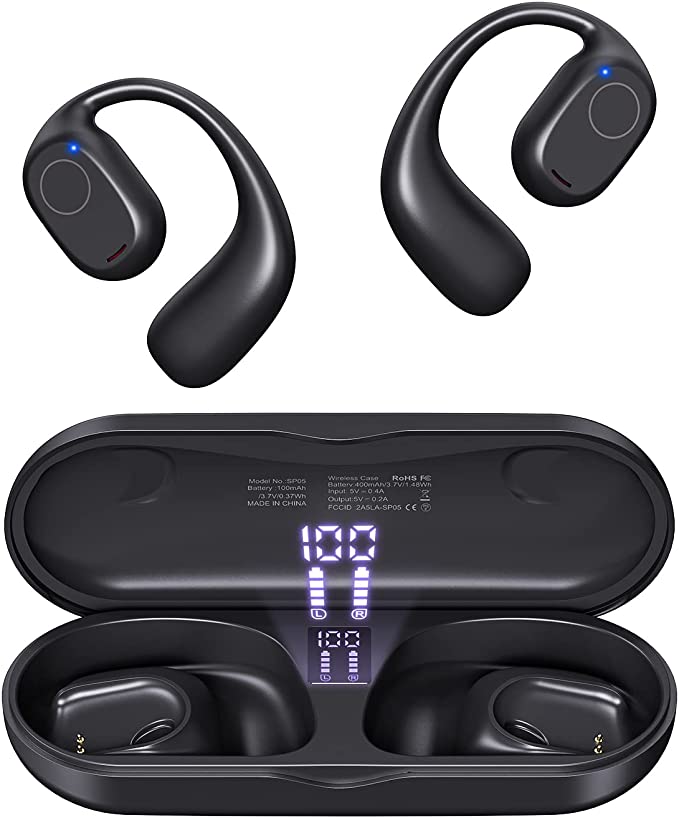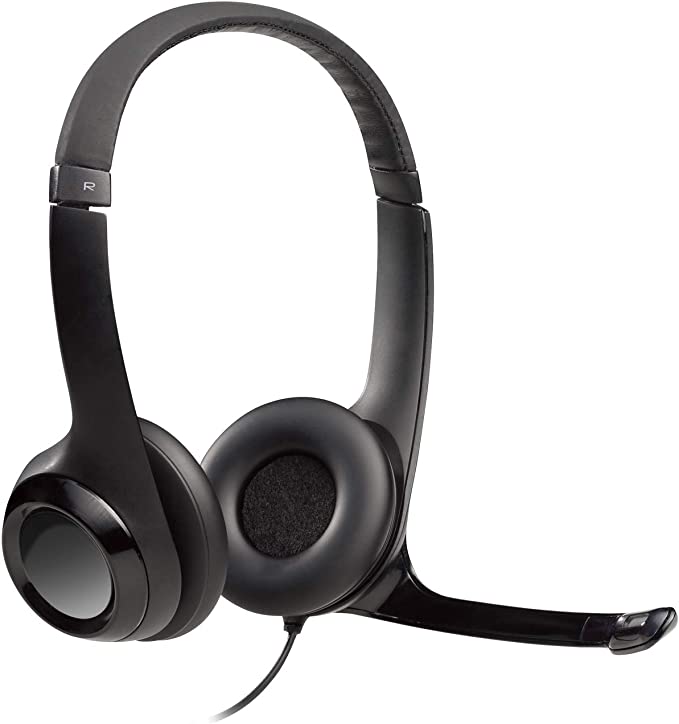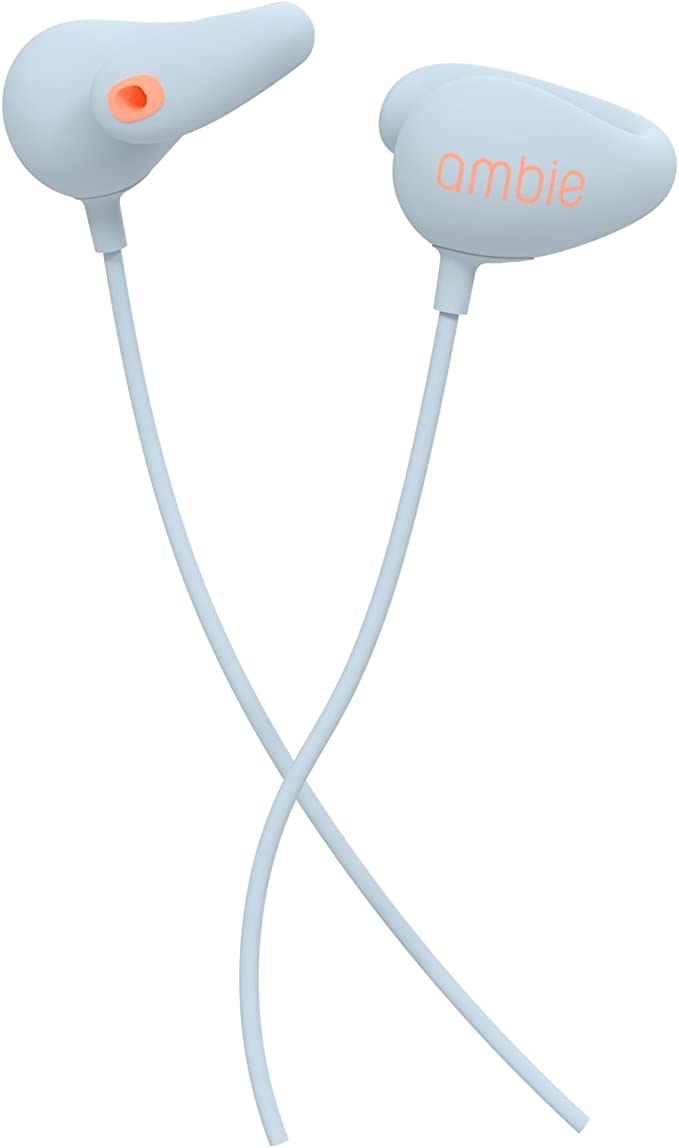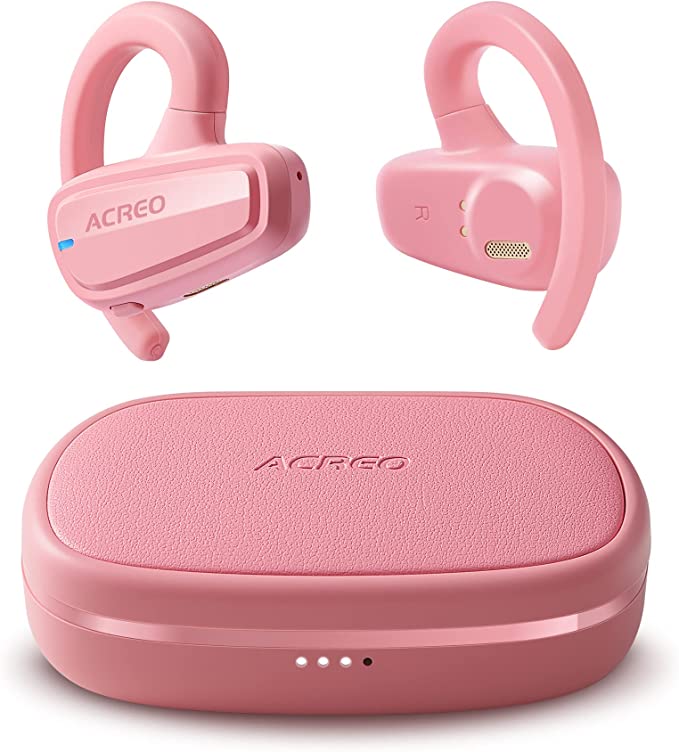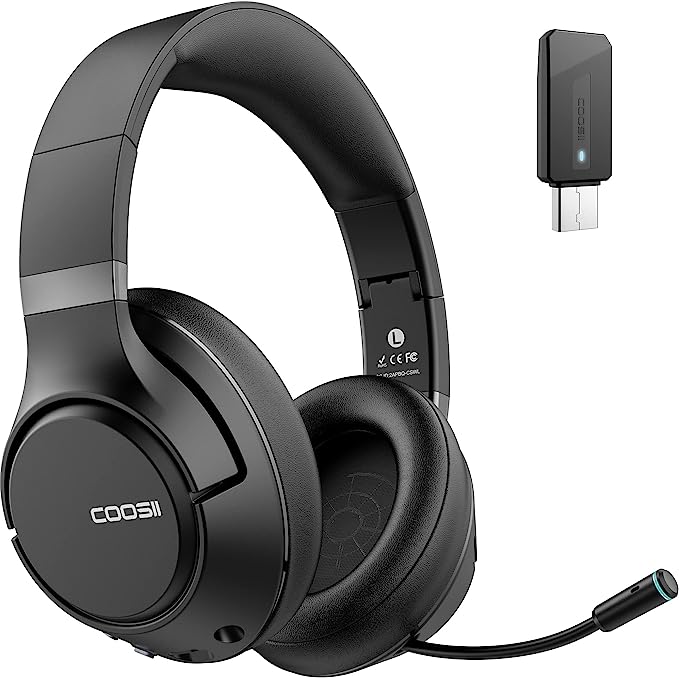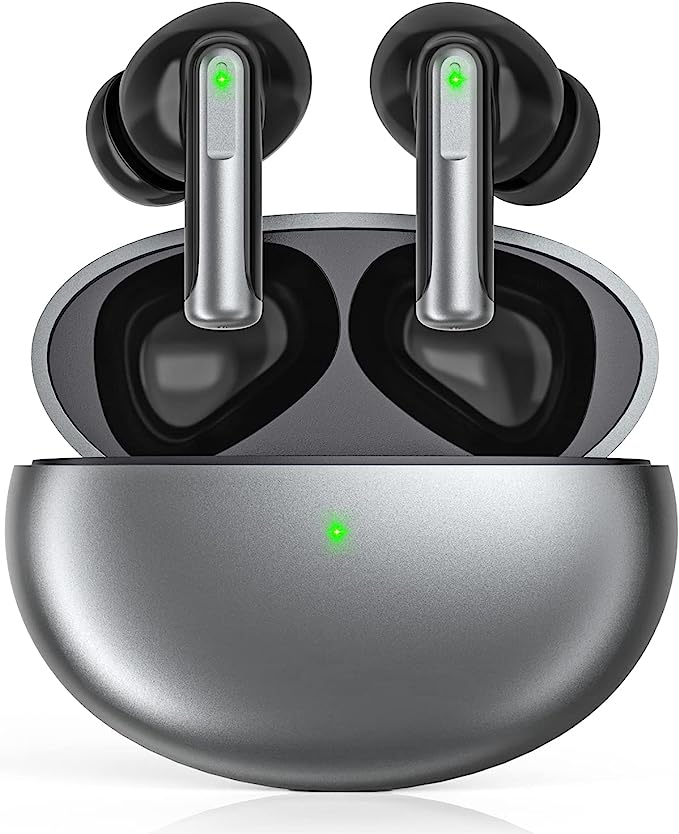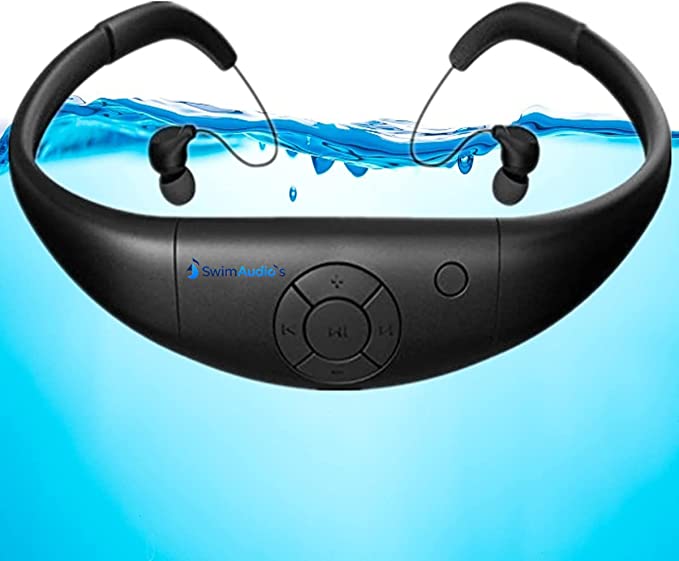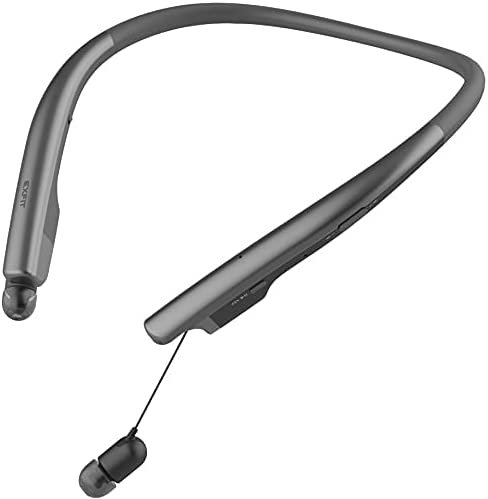CAPOXO N7 Wireless Earbuds: 50Hrs Playtime & Wireless Charging Explained
Update on Feb. 8, 2025, 1:09 p.m.
A World Unplugged: The Rise of Wireless Earbuds
From tangled wires to complete freedom, the evolution of personal audio has been remarkable. The journey began with bulky headphones connected to stationary devices, progressed to portable music players with wired earbuds, and has now culminated in the sleek, convenient world of wireless earbuds. These tiny devices have become ubiquitous, accompanying us on commutes, workouts, and even moments of quiet relaxation. The CAPOXO N7 wireless earbuds represent a significant step in this evolution, packing impressive technology into a compact and affordable package. But how do these seemingly magical devices work? Let’s delve into the science behind the features.

Sound Waves to Your Ears: The Magic of Dynamic Drivers
Before we can understand how wireless earbuds transmit sound, we need to understand how they produce sound in the first place. The CAPOXO N7, like many earbuds, uses dynamic drivers. Think of a dynamic driver as a tiny loudspeaker.
Sound, fundamentally, is vibration. When an object vibrates, it creates pressure waves in the air. These waves travel to our ears, where they vibrate our eardrums, which our brain interprets as sound. The frequency of the vibration determines the pitch (high or low), and the amplitude (size) of the vibration determines the volume.
A dynamic driver creates these vibrations using a simple yet ingenious mechanism. It consists of three main parts:
- Diaphragm: A thin, flexible membrane, often made of plastic or a composite material.
- Voice Coil: A coil of wire attached to the diaphragm.
- Magnet: A permanent magnet positioned near the voice coil.
When an electrical audio signal flows through the voice coil, it creates a fluctuating magnetic field. This field interacts with the permanent magnet’s field, causing the voice coil (and the attached diaphragm) to move back and forth. This movement creates the pressure waves that we perceive as sound.
The size of the driver matters, particularly when it comes to bass response. The CAPOXO N7 boasts 13mm drivers. Generally, larger drivers can move more air, resulting in a richer, more powerful bass. Smaller drivers might struggle to reproduce low frequencies effectively, leading to a thinner sound. While driver size isn’t the only factor determining sound quality (the quality of the materials, the tuning, and the enclosure all play a role), it’s a significant one.

Powering Your Playlist: The Science of Battery Life and Wireless Charging
One of the defining features of wireless earbuds is, of course, their wirelessness. This freedom from wires relies on batteries, and battery life is a crucial consideration. The CAPOXO N7 claims a total playtime of 50 hours, a figure that represents the combined listening time provided by the earbuds themselves and the charging case.
The earbuds, on their own, offer an estimated 6-8 hours of playback on a single charge, according to user feedback. The charging case acts as a portable power bank, storing additional energy to recharge the earbuds multiple times. This extends the total listening time significantly.
The underlying principle is simple: battery capacity, usually measured in milliampere-hours (mAh), determines how much energy can be stored. A higher mAh rating generally translates to longer battery life. While the exact mAh specifications for the N7’s earbuds and case aren’t provided, the 50-hour total playtime suggests a substantial combined capacity.
But what about the convenience of wireless charging? This feature, also offered by the CAPOXO N7, relies on a fascinating principle called electromagnetic induction.

Imagine a swing set. If you push it at the right frequency – its resonant frequency – you can get it swinging higher and higher with minimal effort. Electromagnetic induction works in a similar way, but instead of pushes, we use magnetic fields.
A wireless charging pad contains a coil of wire. When electricity flows through this coil, it generates an oscillating magnetic field. The charging case of the CAPOXO N7 also contains a coil. When you place the case on the charging pad, the oscillating magnetic field from the pad induces a current in the case’s coil, without any physical connection. This induced current is then used to charge the battery within the case, which in turn charges the earbuds.
It’s a bit like magic, but it’s pure physics! This process is governed by Faraday’s Law of Induction, which states that a changing magnetic field will induce a voltage in a nearby conductor. The efficiency of wireless charging depends on factors like the alignment of the coils, the distance between them, and the materials used.

Staying Connected: Understanding Bluetooth 5.3
The CAPOXO N7 utilizes Bluetooth 5.3, the latest iteration of this ubiquitous wireless communication technology. Bluetooth allows devices to communicate wirelessly over short distances using radio waves in the 2.4 GHz frequency band. But how does it work, and what makes version 5.3 an improvement?
Bluetooth operates by “hopping” between different frequencies within the 2.4 GHz band. This frequency hopping helps to avoid interference from other devices that might be using the same frequency band (like Wi-Fi routers or microwaves).
Bluetooth 5.3 offers several key advantages over its predecessors:
- Enhanced Connection Stability: Bluetooth 5.3 incorporates features that improve connection reliability, especially in environments with many wireless devices. This means fewer dropouts and a more consistent listening experience.
- Lower Power Consumption: One of the most significant improvements in Bluetooth 5.3 is its reduced power consumption. This is achieved through various optimizations in the way data is transmitted and received, contributing to the extended battery life of devices like the CAPOXO N7.
- Reduced Latency: Bluetooth 5.3, allow for lower audio delay.
It’s important to acknowledge that Bluetooth, like any wireless technology, has limitations. Its range is typically limited to around 30 feet (though this can vary depending on the environment and the devices involved). Obstacles like walls can also weaken the signal. And, while Bluetooth 5.3 is designed to minimize interference, it can still occur in very crowded wireless environments.
Weathering the Storm: The Meaning of IPX7 Waterproofing
The CAPOXO N7 boasts an IPX7 waterproof rating. But what does that actually mean? The “IP” stands for “Ingress Protection,” and the rating system is defined by the International Electrotechnical Commission (IEC).
The “X” in IPX7 indicates that the device has not been formally tested for protection against solid particles (like dust). The “7” is the crucial part, referring to the level of protection against liquids.
An IPX7 rating means that the device can withstand being submerged in up to 1 meter (3.3 feet) of water for 30 minutes without damage. This doesn’t mean you should go swimming with your earbuds, but it does mean they can handle sweat, rain, and even accidental drops in a puddle.
The testing procedure for IPX7 involves submerging the device in fresh water at the specified depth and duration. After removal, the device is inspected for any signs of water ingress that could affect its functionality. It’s a rigorous test that provides assurance of the earbuds’ resilience to water exposure.

Beyond the Basics: The Future of Wireless Audio
The CAPOXO N7 represents a snapshot of current wireless earbud technology, but the field is constantly evolving. What might the future hold?
- Improved Audio Codecs: New audio codecs (the software that compresses and decompresses audio for Bluetooth transmission) are constantly being developed, promising higher fidelity and lower latency.
- Longer Battery Life: Advances in battery technology are likely to lead to even longer playtimes on a single charge.
- Spatial Audio: More earbuds are incorporating spatial audio features, creating a more immersive and three-dimensional listening experience.
- Enhanced Noise Cancellation: While the N7 doesn’t feature active noise cancellation (ANC), this is a growing trend in higher-end earbuds. ANC uses microphones and clever signal processing to actively block out external noise.
- Biometric Sensor Future earbuds may incorporate biometric sensors to track heart rate, body temperature, or other health data.
The world of wireless audio is dynamic and exciting. The CAPOXO N7, with its blend of features and affordability, offers a glimpse into this ever-evolving landscape, allowing users to experience the benefits of cutting-edge technology without breaking the bank. While further advancements are definitely on the horizon, the fundamental science behind these small pieces of technology will largely stay the same.
